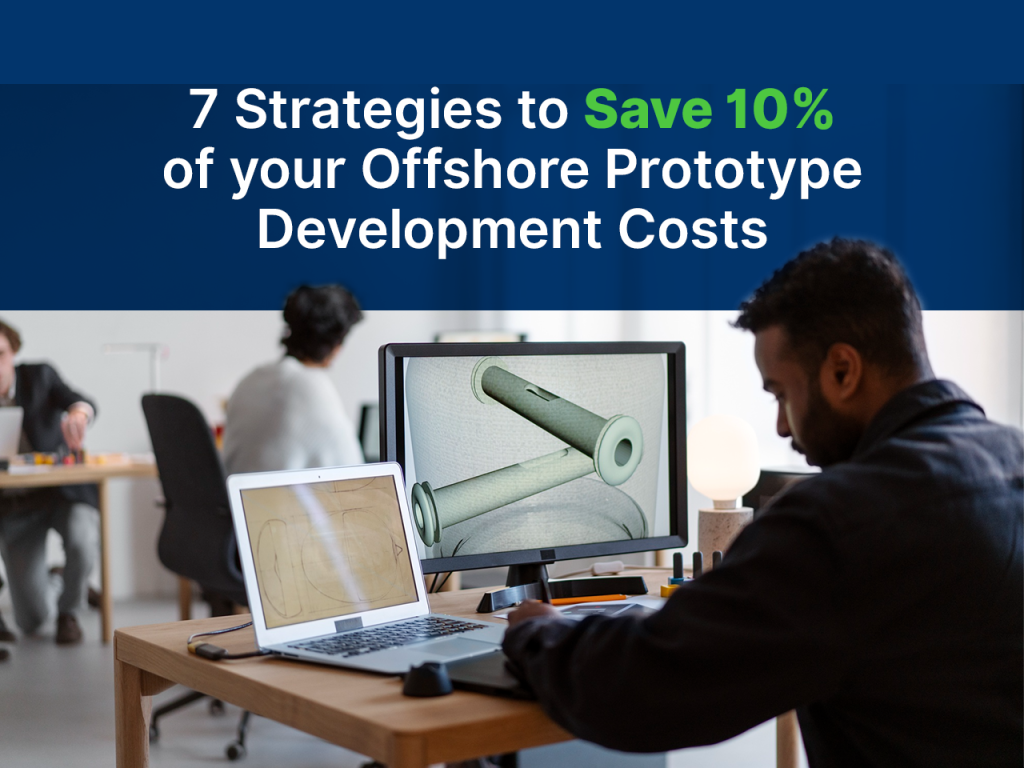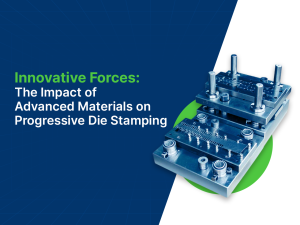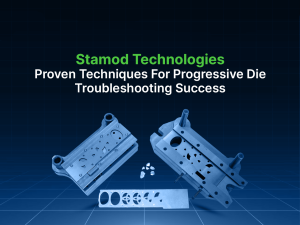Introduction
The Manufacturing Industry and its cost saving challenges
The manufacturing industry plays a pivotal role in the global economy, producing a wide range of products that meet consumer and business needs. However, this sector faces significant challenges when it comes to cost-saving. These challenges include the rising costs of labor, materials, energy, and transportation, as well as increasing competition in the global market. Manufacturers are under constant pressure to reduce expenses while maintaining or improving product quality and efficiency. We will explore seven strategies that manufacturing companies can employ to save 10% of their costs through offshore prototype development, addressing these critical cost-saving challenges.
Concept of Offshore Prototype Development
Offshore prototype development is a strategic approach where manufacturing companies collaborate with offshore partners to create and refine product prototypes and designs. This involves leveraging the expertise and cost advantages of offshore teams to rapidly and cost-effectively develop initial product models. Offshore development can encompass various stages, from design and prototyping to manufacturing and quality control. By taking advantage of offshore resources and capabilities, companies can accelerate product development, reduce costs, and tap into global talent, ultimately bringing innovative and cost-efficient products to market. This blog explores seven key strategies for manufacturing companies to successfully implement offshore prototype development and achieve significant cost savings.
7 Strategies to achieve cost savings
- Efficient Offshore Partner Selection: Learn how to choose the right offshore partner to maximize expertise and minimize risks.
- Streamlined Communication: Discover how effective cross-border communication can enhance collaboration and reduce costly misunderstandings.
- Cost-Effective Materials Sourcing: Explore the benefits of global material sourcing and strategies for reducing material costs.
- Accelerated Product Development: Uncover techniques to expedite product development, enabling quicker time-to-market and cost reductions.
- Lean Manufacturing Principles: Implement lean manufacturing strategies to eliminate waste and enhance efficiency, reducing production costs.
- Quality Control and Risk Mitigation: Learn how to maintain product quality and minimize risks in offshore manufacturing, preventing costly setbacks.
- Continuous Improvement: Embrace an ongoing improvement mindset to optimize offshore development processes and sustain long-term cost savings.
These strategies are essential for manufacturing companies looking to save costs and remain competitive in today’s global market through offshore prototype development.
1. Efficient Offshore Partner Selection
The crucial role in selecting an efficient offshore partner
Selecting the right offshore partner is pivotal in offshore prototype development as it directly impacts the success and cost-efficiency of the entire process. A well-chosen partner brings specialized skills, cost advantages, and the capacity to meet project requirements efficiently. They can reduce development time, minimize errors, and provide access to a broader talent pool. Equally crucial is ensuring that the partner aligns with your company’s goals, values, and communication standards. The wrong partner can lead to miscommunications, delays, and quality issues, ultimately increasing costs and compromising the success of the project. Careful selection is the foundation for achieving cost savings and successful outcomes.
Criteria for Evaluating Potential Partners
Evaluating potential offshore partners for prototype development is a multifaceted process that requires meticulous consideration of various criteria to ensure the project’s success and cost-efficiency.
First and foremost, expertise and experience are paramount. Look for partners with a proven track record in your industry and specific expertise relevant to your project. Past success is often a good indicator of their capabilities. Investigate their reputation and ask for references and case studies to assess client satisfaction and their ability to deliver on promises.
Quality standards play a critical role in maintaining the integrity of your product. Ensure that the partner adheres to industry-specific quality certifications and standards.
Transparent discussions about cost structures and pricing models are essential. Assess not only initial costs but also long-term expenses to make an informed financial decision.
Effective communication is crucial for a smooth collaboration. Evaluate the partner’s language proficiency, responsiveness, and their ability to understand and align with your project goals.
Cultural compatibility cannot be overlooked, as a strong cultural fit can lead to more effective communication and collaboration.
Geographical location matters, as time zones and travel logistics can impact real-time communication and travel costs.
Legal and regulatory compliance, intellectual property protection, and risk mitigation strategies are non-negotiables to safeguard your project and assets.
Finally, flexibility, scalability, and a commitment to adaptability are crucial for long-term success, ensuring the partner can grow with your project’s changing needs. By thoroughly assessing potential partners based on these criteria, you can make an informed choice that aligns with your project goals and maximizes cost savings.
2. Streamlined Communication
Importance of Effective cross border communication
Effective cross-border communication is paramount in offshore prototype development. It transcends being a mere necessity; it’s the lifeblood of successful collaboration. Clear and efficient communication bridges geographic and cultural gaps, ensuring that project goals are understood and met. It prevents misunderstandings, costly errors, and project delays. In the context of offshore partnerships, where teams may be located in different time zones and speak different languages, the ability to convey ideas, expectations, and feedback is what keeps a project on track. It fosters a collaborative environment, instills trust, and ultimately leads to cost savings and a successful outcome. Communication is not just a means; it’s the cornerstone of offshore success.
Tips for improving communication with offshore teams
- Use Appropriate Communication Tools: Select the right tools and platforms for efficient communication, such as video conferencing, project management software, and messaging apps.
- Establish Clear Communication Protocols: Define communication guidelines, response times, and preferred channels to ensure consistency.
- Designate Clear Points of Contact: Appoint dedicated points of contact on both sides to facilitate smooth communication and information flow.
- Cultural Sensitivity: Be mindful of cultural differences in communication styles, and adapt your approach to accommodate diverse perspectives.
- Regular Check-Ins: Schedule frequent video or voice meetings to discuss progress, build relationships, and address concerns.
- Documentation: Keep detailed project records, including meeting notes and milestone tracking, to maintain clarity and accountability.
- Feedback Mechanisms: Create a culture of open and constructive feedback to improve communication and resolve issues effectively.
The Role of Technology in facilitating communication
Technology plays a pivotal role in facilitating communication, particularly in the context of offshore prototype development. It serves as the backbone of efficient cross-border collaboration by offering numerous benefits:
- Global Connectivity: Technology transcends geographical boundaries, enabling real-time communication with offshore teams, regardless of their location.
- Diverse Communication Channels: Various digital tools and platforms, such as video conferencing, email, instant messaging, and project management software, provide a wide array of channels to suit different communication needs.
- Enhanced Productivity: Technology streamlines information exchange, document sharing, and project updates, leading to improved productivity and faster decision-making.
- Time Zone Management: Tools that display multiple time zones aid in coordinating meetings and ensuring that team members can work together effectively despite differing time zones.
- Data Security: Advanced encryption and security measures protect sensitive information, addressing concerns about data privacy.
- Mobility: Mobile communication apps enable team members to connect and collaborate on the go, further promoting flexibility and accessibility.
- Efficient Documentation: Digital tools help in documenting and tracking project progress, reducing the risk of miscommunication and disputes.
In essence, technology is the linchpin that empowers offshore teams to communicate seamlessly, bridging the gaps created by distance, time zones, and diverse cultures, thereby fostering effective collaboration and cost-saving outcomes in prototype development.
3. Cost Effective Materials Sourcing
Advantages of global material sourcing for cost reduction
Global material sourcing offers several advantages that can significantly contribute to cost reduction for manufacturing companies:
- Cost Savings: Access to a broader supplier base allows manufacturers to find materials at a lower cost. Some regions offer more competitive pricing due to lower production and labor costs.
- Economies of Scale: Sourcing materials globally often means larger volume purchases, which can lead to economies of scale and reduced per-unit costs.
- Diverse Supplier Options: A global approach provides a wider range of suppliers and materials, allowing manufacturers to choose the most cost-effective and high-quality options.
- Specialization: Different regions may specialize in particular materials or components, resulting in higher quality and cost-efficient products. Manufacturers can tap into these specialized markets.
- Risk Mitigation: Diversifying material sources across different regions can help mitigate risks associated with supply chain disruptions, natural disasters, or political instability in a single location.
- Innovation: Global sourcing can introduce new and innovative materials or processes that may not be available domestically, potentially improving product quality and reducing costs.
- Access to Raw Materials: Some materials are available in abundance in specific regions, reducing transportation costs and minimizing the environmental impact.
- Reduced Lead Times: Carefully managed global sourcing can lead to reduced lead times, enabling manufacturers to bring products to market faster and potentially reducing storage and working capital costs.
- Market Flexibility: Manufacturers can adjust material sourcing based on market fluctuations and currency exchange rates, optimizing cost-effectiveness.
- Competitive Advantage: Cost savings achieved through global material sourcing can be passed on to customers, enhancing competitiveness in the market.
However, it’s important to note that global material sourcing also comes with challenges, such as supply chain complexities, logistics management, quality control, and potential cultural differences. Therefore, careful planning and due diligence are essential to fully realize the advantages while mitigating the associated risks.
Practical tips for finding cost-effective suppliers
Finding cost-effective suppliers is crucial for reducing manufacturing costs. Here are some practical tips:
- Conduct Extensive Research: Invest time in researching potential suppliers to identify those with a track record of competitive pricing.
- Leverage Online Platforms: Utilize online supplier directories and platforms to discover a wide array of suppliers and compare prices.
- Request Multiple Quotes: Don’t settle for the first quote you receive; request multiple quotes and negotiate for favorable terms.
- Consider Offshore Options: Explore international suppliers who may offer cost advantages due to lower labor and production costs.
- Establish Long-Term Relationships: Building strong relationships with suppliers can lead to better pricing over time.
- Attend Trade Shows: Participate in industry trade shows to meet suppliers in person and discuss cost-saving opportunities.
- Audit and Quality Control: Ensure that cost savings do not compromise product quality by implementing thorough audits and quality control measures.
- Collaborate with Group Purchasing: Join or create group purchasing organizations to leverage collective buying power for reduced costs.
- Negotiate Favorable Terms: Negotiate payment terms, delivery schedules, and bulk discounts to maximize cost-effectiveness.
- Continuous Evaluation: Continuously evaluate supplier performance and cost competitiveness to identify opportunities for improvement.
By following these practical tips, manufacturers can identify suppliers that offer cost-effective solutions without compromising quality or service.
4. Accelerated Product Development
How offshore development can accelerate product development
Offshore development can significantly accelerate product development in several ways. First, it offers access to a global talent pool, allowing companies to tap into specialized skills and expertise that may not be available locally. This can speed up the design, engineering, and prototyping phases.
Second, offshore teams can work on projects round the clock due to differing time zones. This results in a 24/7 work cycle, reducing project timelines. Additionally, offshore development often means increased resource scalability, enabling the rapid allocation of additional manpower when needed.
Third, cost advantages can lead to larger budgets for research, development, and innovation, expediting the creation of new products. Companies can invest more in research and testing without significantly impacting their bottom line.
Lastly, the competitive pressure in offshore markets drives a culture of efficiency and agility, which can further accelerate product development. Combined, these factors make offshore development a potent tool for faster time-to-market and more rapid product innovation.
Agile Development methodologies and their benefits
Agile development methodologies are a set of principles and practices that prioritize flexibility, collaboration, and customer-centric approaches in software development and increasingly, in various other fields. Here are some of their key benefits:
- Customer-Centric Agility: Agile methodologies prioritize understanding and meeting customer needs through regular feedback and adaptability.
- Flexibility and Adaptation: Agile allows for quick adaptation to changing project scope, requirements, and priorities, promoting efficiency in evolving markets.
- Accelerated Time-to-Market: Short, iterative development cycles in Agile lead to faster product releases, enabling companies to remain competitive.
- Enhanced Quality and Collaboration: Agile fosters frequent testing, quality assurance, and cross-functional collaboration, resulting in higher-quality products and creative solutions.
- Cost Efficiency and Continuous Improvement: Agile practices encourage efficient resource use, reducing costs, while also promoting employee satisfaction and fostering a culture of continuous improvement.
5. Lean Manufacturing Principles
Concept of Lean Manufacturing
Lean manufacturing is a production philosophy and methodology that aims to streamline operations, reduce waste, and optimize efficiency in the manufacturing process. It originated from the Toyota Production System (TPS) and has since been adopted by various industries worldwide. Key principles of lean manufacturing include:
- Waste Reduction: Identifying and eliminating all forms of waste, including overproduction, excess inventory, defects, unnecessary processing, transportation, and waiting times.
- Continuous Improvement (Kaizen): Encouraging a culture of continuous improvement at all levels of the organization, empowering employees to identify and address inefficiencies.
- Value Stream Mapping: Visualizing the entire production process to identify bottlenecks and areas for improvement.
- Just-In-Time (JIT) Manufacturing: Producing only what is needed, when it’s needed, reducing excess inventory and storage costs.
- Pull System: Creating a system where production is driven by customer demand rather than pushing products through the manufacturing process.
- Standardized Work: Defining and maintaining standardized processes to ensure consistency and quality.
- Respect for People: Valuing and respecting the knowledge and contributions of employees, involving them in decision-making and continuous improvement efforts.
- Visual Management: Using visual cues and tools to make processes and information transparent, making it easier to spot issues and inefficiencies.
- Poka-Yoke (Error Proofing): Designing processes and systems to prevent errors and defects from occurring.
- Multi-Skilled Workforce: Encouraging employees to develop a broad set of skills to enhance flexibility and adaptability in the manufacturing process.
Lean manufacturing is not limited to the shop floor; it can be applied to various business functions, including supply chain management, product design, and administrative processes, to eliminate waste and improve overall efficiency. Its ultimate goal is to deliver high-quality products or services to customers, on time and at the lowest possible cost.
Lean Manufacturing relevance to cost savings in offshore development
- Efficiency Improvement: Lean principles help offshore teams identify and eliminate inefficiencies, reducing operational costs.
- Waste Reduction: By minimizing waste, such as excess inventory or unnecessary processing, offshore development becomes more cost-effective.
- Faster Product Development: Lean practices accelerate product development, reducing time-to-market and associated costs.
- Enhanced Quality: Lean’s focus on standardized work and continuous improvement results in higher product quality, reducing costly defects and rework.
- Resource Optimization: The optimization of resources, including human resources and materials, contributes to cost savings.
- Transparency and Accountability: Visual management and standardized processes make it easier to track progress and costs in offshore projects.
- Flexibility and Adaptability: Lean principles increase the adaptability of offshore teams, enabling cost-effective responses to changing project requirements.
By incorporating Lean Manufacturing practices, offshore development can efficiently meet project goals while minimizing costs.
6. Quality Control and Risk Mitigation
The significance of quality control in offshore manufacturing
Quality control holds immense significance in offshore manufacturing due to its far-reaching impacts. It ensures that products consistently meet defined standards and specifications, regardless of geographic distances. The emphasis on quality control is pivotal for achieving customer satisfaction, enhancing brand reputation, and fostering customer trust. By identifying and addressing issues early in the manufacturing process, it reduces the risk of defects, costly recalls, and associated penalties. Furthermore, meeting quality standards and regulatory requirements is not just essential for market access but also crucial for ensuring product safety. Effective quality control practices contribute to cost reduction by preventing defects and rework. This, in turn, enhances a company’s competitiveness in global markets, bolsters its brand reputation, and builds customer loyalty. Quality control in offshore manufacturing creates a foundation for supply chain efficiency and risk management while promoting continuous improvement and cost savings.
How to Mitigate Risks and ensure product quality
Mitigating risks and ensuring product quality in offshore manufacturing is crucial for a successful outcome. Here are steps to achieve this:
- Thorough Due Diligence: Conduct comprehensive research on potential offshore partners, considering their reputation, past performance, and quality control processes.
- Clear Contracts: Establish clear, detailed contracts that outline quality standards, product specifications, delivery schedules, and dispute resolution procedures.
- Quality Assurance Protocols: Implement robust quality assurance protocols to monitor and inspect the manufacturing process at various stages to catch defects early.
- On-Site Audits: Periodically conduct on-site audits of the offshore facility to ensure it adheres to quality and safety standards.
- Product Testing: Employ extensive product testing and validation to confirm that the final product meets your specifications and regulatory requirements.
- Communication: Maintain open and frequent communication with the offshore partner to address concerns and resolve issues promptly.
- Continuous Improvement: Foster a culture of continuous improvement in both your organization and the offshore partner’s facility to enhance product quality over time.
- Risk Management Plan: Develop a comprehensive risk management plan to identify potential issues and establish protocols for addressing them.
- Contingency Plans: Create contingency plans for various scenarios, including supply chain disruptions, quality issues, and delays, to ensure project continuity.
- b Encourage feedback from employees, customers, and partners to identify areas for improvement.
By implementing these strategies, you can mitigate risks and maintain high product quality in offshore manufacturing, ensuring that your projects run smoothly and meet your standards and expectations.
7. Continuous Improvement
Methods for measuring and enhancing offshore development processes
Measuring and enhancing offshore development processes is essential for maintaining efficiency and quality. Here are methods to achieve this:
- Key Performance Indicators (KPIs): Define and track KPIs that reflect the success and efficiency of offshore development, such as project completion time, defect rates, and customer satisfaction.
- Benchmarking: Compare your offshore processes and outcomes to industry standards or best practices to identify areas for improvement.
- Quality Audits: Conduct regular quality audits to assess adherence to processes, standards, and guidelines.
- Root Cause Analysis: Investigate the root causes of issues and inefficiencies to develop targeted solutions.
- Customer Feedback: Solicit feedback from customers and end-users to gain insights into their experiences and satisfaction with the product or service.
- Process Mapping: Visualize the offshore development process to identify bottlenecks and areas for improvement, facilitating process optimization.
- Continuous Improvement Frameworks: Implement continuous improvement methodologies, such as Six Sigma or Lean, to systematically enhance processes.
- Collaborative Reviews: Regularly review projects with offshore teams, fostering open discussions on improvements and best practices.
- Training and Skill Development: Invest in training programs to enhance the skills and capabilities of offshore teams.
- Technology Integration: Embrace new technologies and tools to improve communication, collaboration, and productivity.
- Cost Analysis: Continuously assess the cost-effectiveness of offshore development, identifying opportunities to reduce costs without compromising quality.
- Scalability Assessments: Evaluate the scalability of offshore processes to ensure they can adapt to changes in project scope and demand.
- Supplier Performance Metrics: Define supplier performance metrics and conduct regular assessments to hold offshore partners accountable for quality and efficiency.
By employing these methods, you can systematically measure and enhance offshore development processes, ensuring they remain efficient, productive, and aligned with your objectives.

Engineering
Manufacturing
Prototyping
Software Development
AI for Manufacturing
Engineering
Manufacturing
Prototyping
Software Development
AI for Manufacturing








